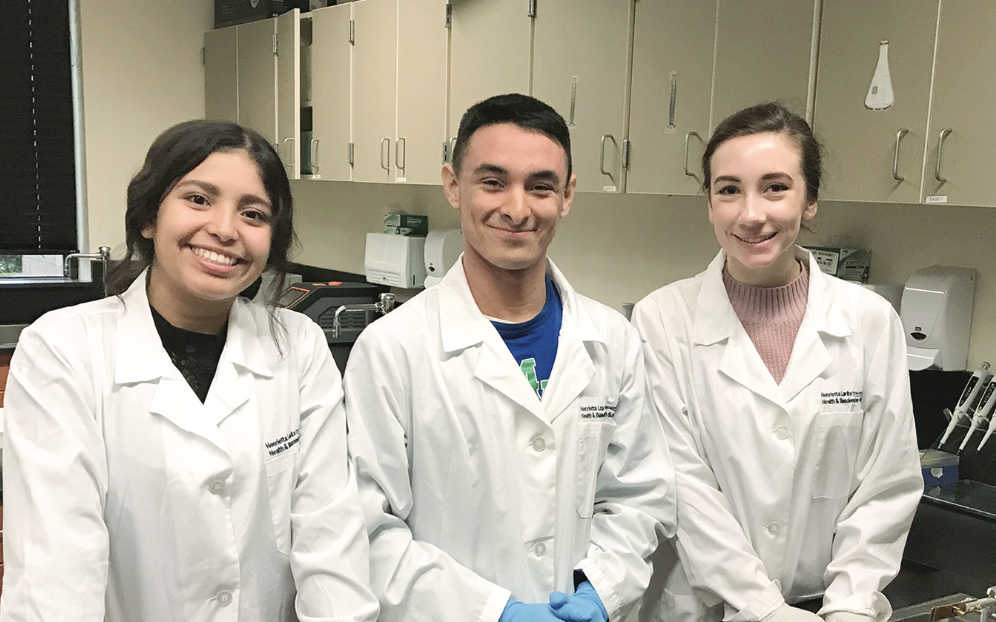Washington is facing a workforce dilemma. We may offer a variety of exciting opportunities in high-growth sectors and one of the highest starting salaries in the country, but businesses in the Evergreen State still struggle to fill positions. In fact, there are just 77 workers for every 100 open jobs.
For high school seniors with an eye on high-paying, long-lasting careers, the labor shortage is opening doors that had always remained locked unless they completed trade school or college. Thanks to school districts across the state that have launched successful workforce development programs, students are building real-world job skills during the school day, and savvy business owners are embracing a ready-made workforce.
Access to Life-Changing Apprenticeships
When participants of Elma High School’s AJAC: Advanced Manufacturing Apprenticeships program jot down their signatures on signing day, it’s not a college they’re committing to, but an opportunity to set the groundwork for a highly-skilled, high-paying job after graduation.
Becoming an AJAC Youth Apprentice is an extensive commitment for students, but one that can pay off professionally and financially. Apprentices must complete 2,000 hours of hands-on work with a local manufacturing partner and 150 hours of rigorous college-level classroom instruction. All positions are paid, and students graduate with journeyman credentials.
“We’re in the business of preparing students for life beyond high school,” said Christopher Nesmith, superintendent of the Elma School District. “AJAC offers them the opportunity to engage in the adult world with adult work, and if they struggle, we’re in a position to help them fail forward and restart with a new mindset.”
While some graduates have remained with their AJAC employers, others have used their experience to secure roles in the military or take their knowledge and skills to a four-year university.
The Chance to Try on Different Careers
As soon as our kids can talk, we ask them what they want to be when they grow up. By the time they’re in high school, we expect them to have an answer – and for a 16- or 17-year-old whose interests are still developing – this can be incredibly demanding.
For Israel Hernandez-Reyes, a sophomore at Highline Big Picture School, having the ability to test drive different careers while in high school has been vital. “I started off wanting to learn 4G, then psychology, and then leather working. I eventually interviewed the owner of 2K Metalworks to learn more about CNC plasma cutting, shadowed him a few days, and then I got an internship.”
Like many of his fellow students, Hernandez-Reyes is now at the center of his own learning. Rather than confining students to the classroom, Big Picture, which is part of the nationwide Big Picture Learning program, combines internships, apprenticeships, and interest-based projects into individualized learning plans. These plans immerse students in the topics they’re passionate about and evolve with them as their interests change, and students are also assigned to an advisory cohort of fellow learners and partner with a dedicated mentor.
Hernandez-Reyes’ internship opened his eyes to a career he never expected. “I learned so much from every company I interviewed with, but could never find that spot where I belonged. Once I got this internship, I was pretty satisfied. I love metalworking, and feeling like I could do this for the rest of my life is really refreshing.”
Ensuring Students With Disabilities Access to Career Opportunities
In Spokane, the healthcare field is the city’s largest job creator. However, like other hospital systems across the country, local medical centers have long faced a workforce shortage crisis. At the same time, students with intellectual and developmental disabilities but high-functioning capabilities were graduating high school without a career plan in place.
Spokane Public Schools’ Project SEARCH internship program helps close the hiring gap while providing its students with a solid foundation for their future. Based on the national Project SEARCH model, Spokane’s program connects special needs students in their last year of school district service eligibility with entry-level jobs at one of three medical centers. Positions are available in various departments, including administration, hospitality, and environmental services, and participants work up to 20 hours per week. In addition, they receive support from job coaches, worksite coordinators, and other local mentors.
Because one-third of adults with disabilities live below the poverty line, providing participants with professional autonomy was essential. “We want to make sure our students have meaningful employment – ideally earning a livable wage versus minimum wage,” said teacher Aaron Kagan. “Through their participation in Project SEARCH, they’re there. Their resumes are demanding higher pay and better opportunities.”
Over the last four years, 90 percent of Project SEARCH graduates have secured and maintained permanent employment that provides them with greater independence and confidence.
Preparing students for the workplace of tomorrow requires a collective effort between school districts and community partners, increased investment in innovative workforce development programs, and most important, greater buy-in from local businesses. Across the state, the success of programs like Jobs 253 in Tacoma and the Henrietta Lacks Health and Bioscience High School in Vancouver, has demonstrated that when we foster our students’ skills and talents, we create a dynamic, capable workforce excited to move our state forward.
Editor’s note: This article originally appeared in the Puget Sound Business Journal titled, Opinion: Apprenticeships and internships are key building workforce pipeline and in the Winter 2025 issue of Direct.
Visit wssda.org/direct to see past issues of WSSDA’s newsmagazine and learn about advertising opportunities.
